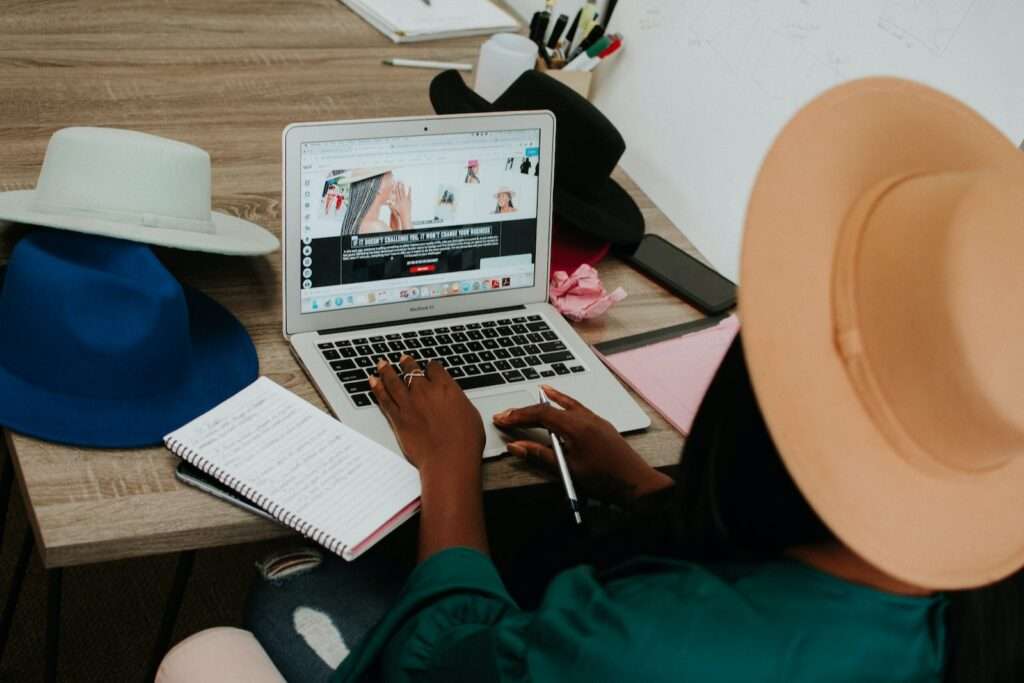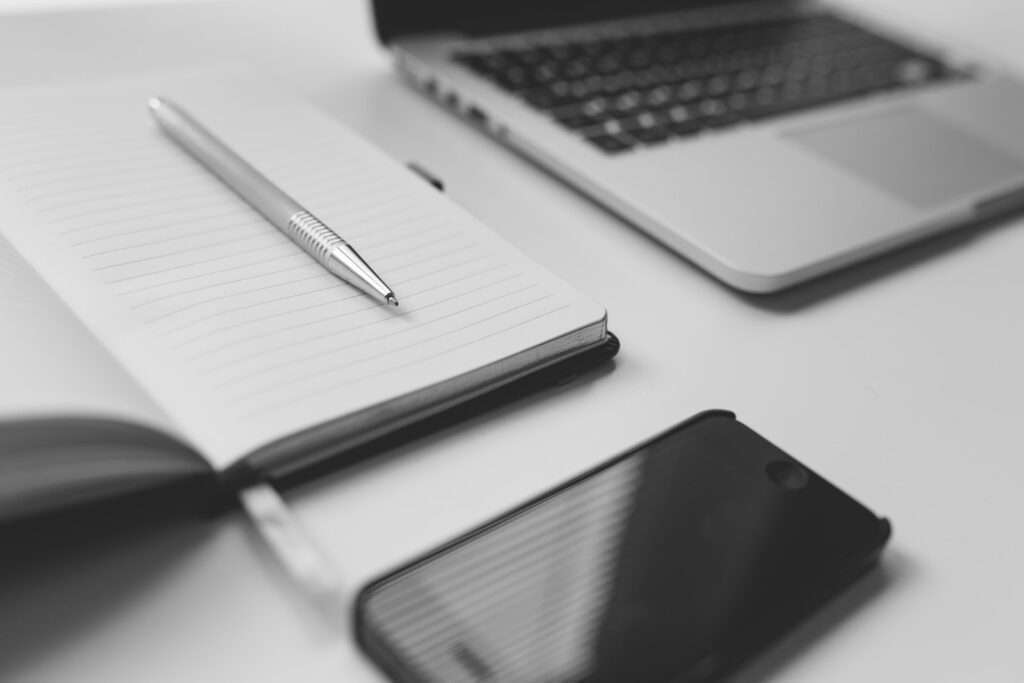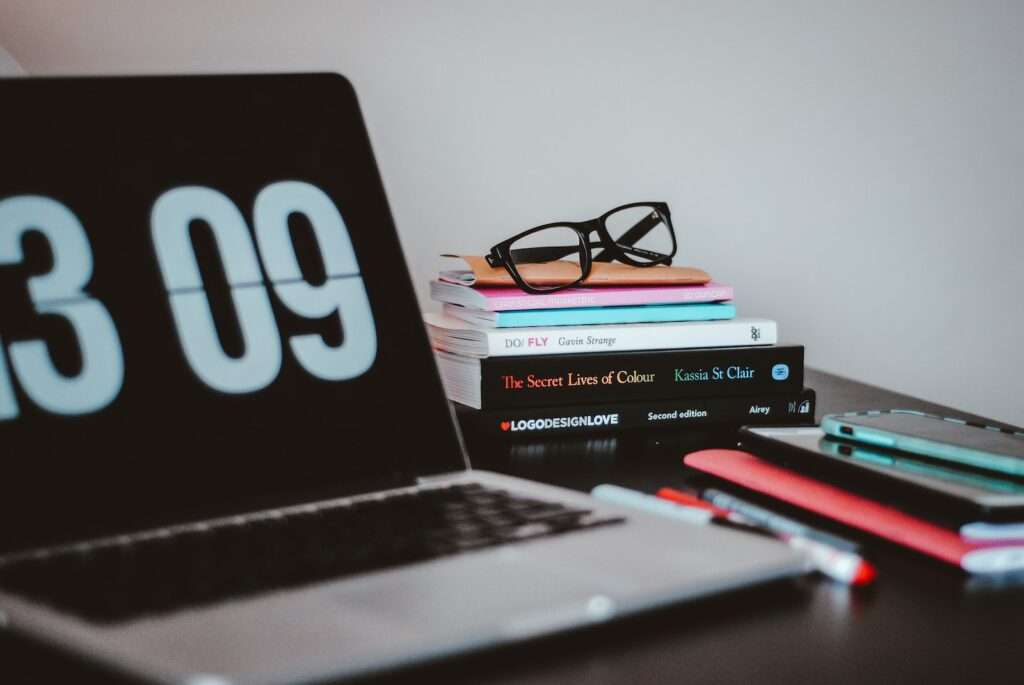October 29, 2022
How I Got Started With Freelancing (A Step by Step Guide You Can Follow)

Viki Johnson
Article, Freelancing
In July 2020, barely two months after I got into learning graphic design, I started my freelance career with very little clue about what I was doing. I had basic computer skills, beginner-level graphic design skills, and some basic knowledge of the internet.
Another question I’ve gotten one hundred and one times is “How do I get started with freelancing?” I’ve come to realize that just sharing how I got started helps other people make the decision to take the first step, and they’re able to pick out some guiding points. So, in this post, I’m going to detail the steps that led me from the point of being a broke Nigerian student to a comfortable, independent, soon-to-be graduate. My freelance journey so far is one I will always be grateful for. My “almost every weekday” involves working a remote job, schooling, and running a brand and web design business online. Yup, that’s a lot, I know. Is it challenging? Absolutely! Is it fun? Absolutely! Is it rewarding? Abso-effing-lutely!
Why am I writing this? Well, I hope that it helps someone out here to find direction in their journey to becoming a freelancer. And lowkey, I kind of dig the idea of sending someone a link to my blog when next I’m asked this question: “How do I get started doing what you do?” Not even lowkey self, this is the real reason. If you like don’t find direction, sapa will find you first. I’m joking, I’m joking. Alright, let’s relive how I ended up here, shall we?
In July 2020, barely two months after I got into learning graphic design, I started my freelance career with very little clue about what I was doing. I had basic computer skills, beginner-level graphic design skills, and some basic knowledge of the internet. I learned most of the skills I now have on the job. Two years in, and I’m so grateful I didn’t sit around waiting to bag a University degree before plunging myself into some semblance of a career. For one, I’m able to fund some personal projects (which I only dreamed of doing in the past) because I now have an income, and I have a sense of usefulness to the world (LOL). Another advantage is that I’ve managed to bag over two years of work experience in the corporate space (by the time I’ll graduate it’ll have been three years – depending largely on how the relationship between ASUU and the FGN goes) [**edited. Them don call off strike oh! Halleluyah!] sitting pretty on my resume. This will definitely come in handy when advancing my career after school. So, here’s how it all started.


1. I learned a digital skill
I started out learning graphic design during the Covid19 pandemic when schools were out of session (in Nigeria). — Wow! I’m just realizing how much out-of-school time we’ve had. I was stuck at home with so much time on my hands and I didn’t really enjoy watching movies (yes, I’m judging you) so I decided to pick up a digital skill. On the side, I was also learning how to code, but one very frustrating bug in my first web application had me concentrating more on graphic design. At least with Illustrator and Photoshop, you can clearly see what the problem is – there aren’t any hidden breaks playing hide and seek with your emotions. Anyways, that’s step number one.
I often meet people who claim they want to get into some kind of freelance work but aren’t willing to learn a thing. They mostly end up giving up and saying “This thing doesn’t work.” or “I wasn’t lucky to get a job.” but the truth is that getting hired has more to do with effort than luck. You don’t have to be an expert in any field to get hired, you just have to have something to offer, because no one would hire you to do nothing. It’s that simple. Learn a skill first, you don’t have to be great at it before you’re given an opportunity. You’ll get better by doing, but start learning.
Learn a digital skill.
2. I did free work and personal projects to showcase my new skill
Obviously, no one was going to trust me with their money if I couldn’t prove that I could deliver up to a decent level, at least. So I offered to do free designs for a couple of small businesses and I also did a lot of dummy projects I found interesting. — All of which I’m utterly embarrassed to call my handwork now. But anyway, that’s growth, right? You should be able to look back at your past works and feel somewhat embarrassed about them. I was unintentionally building a portfolio that would serve as proof of consistency and determination to learn in the future. Super glad I did those projects.
Interestingly, my first paying client happened to be my older sister, Tope. Shout out to her! she’s an absolute angel! Most of the subsequent paying clients I got within my first year of struggling as a graphic designer came through Tope too. They saw my flyer designs on her social media, liked them and asked me to do something similar for them. Now that’s a perfect example of how luck and effort work together. Luck alone gets you almost nothing, usually.
Build a portfolio.
3. I aggressively applied for freelance jobs & pitched for paid gigs
I believe in the law of attraction. Opportunities rarely come to you if you weren’t already looking for them. Most times, the opportunities you end up getting are not the ones you went after, but can always be traced back to the fact that you went out looking for an opportunity in the first place.
I whipped up the best resemblance of a CV that I could, applied to a total of 9 freelance jobs, and got rejected by all 9 of them. I got feedback from one of the CEOs I applied to work for, telling me why I did not get the job. That was a game changer,- because I was able to act on her feedback and ace my next application. My sister (okay now she’s just stealing the spotlight) told me about a virtual assistant opening at her place of work at the time, I applied, completed a trial task (outdid myself on this one), and got my first freelance job creating graphic and written content for the company’s social media accounts. Yup, I went from “aspiring brand designer” to social media manager. LOL
For some reason, I was required to use Canva for company designs, and for someone who learned graphic design using Adobe Illustrator and Photoshop, I found the platform quite (very) limiting. I found out with time that Canva wasn’t so bad. It was actually very sufficient for social media designs and even more. If you’re a graphic designer reading this, before you kill me, hear me out just a bit. While the pro software are great and I wouldn’t give them up for anything, not all projects require complexity. You will save yourself a lot of time and be much more productive if you can put aside that inherent beef (which every pro software designer usually has) with Canva (and the likes of it), and find how you can use it (them) to your advantage. Really, not all projects require you starting a photoshop design from scratch. A simple social media post, for example, can be very well done using Canva in just a few minutes. I’m not sure why I had to include this paragraph but I’m keeping it in.
Be clear about the opportunities you want and chase them. Also, ahem… Don’t shut down opportunities that lie outside your interests/comfort zone.
4. I learned (abi na learnt) on the job
Try to look at getting employed/hired as part of the self-development process, as opposed to looking at it as an end goal. I pushed to learn more. (Well, I wouldn’t say “pushed” because it’s always fun learning new stuff about things I like.) Anyways, one thing that many young people overlook is the fact that you getting hired does not guarantee that you will stay hired. I think I owe my not losing that job to the fact that I outdid myself on every task I had to perform, trying to do it better than the last time I did it. – Or at least I hope that’s the reason. There was a huge downsizing in the company not so long after I got hired, and I was by far the most unqualified employee at the time. Based on say I never finish school — undergrad.
Just like no one is going to hire you if you have nothing to offer, also, they’ll only keep you around for as long as you’re providing some value to their company/business – unless they’re your dad or something.
keep learning in order to stay relevant.
5. I didn’t throw away my interests
My initial interests were along the lines of branding and web development. They still are. I also love to sing, hang out with my siblings, and friends, and chop life a lot. I made sure to create time for these things as well, doing side projects and all. Because, I mean the point of freelancing is to work while still having the bandwidth to do other things you love right? Being able to create time for my design interests at the time has actually paid off well,- because it’s resulted in the freelance brand and web design business I now run solo-ish. I guess the takeaways here are not to totally sacrifice your personal goals for a paycheck, and try to make time for the things you enjoy doing.
Make time for other interests.
I just typed “6” and realized – that’s about all of the steps involved in the beginning of my freelance journey. So let’s talk about where I’m at on this journey, as of now.
I work in the human resource department of a virtual assistant company, recruiting new virtual assistants — remotely. I also build websites and brand visuals for businesses — most of which are based in the United States, thankfully. And I’m preparing for graduation! Which can finally happen now that the Academic Staff Union Of Universities and the Federal government of Nigeria are no longer keeping malice. Oh, and I’m getting into content creation now — which is why I’m even writing this article in the first place and there have been some cringe-worthy videos on my social media lately. Long story short, I wanna blow. Tenks.
In conclusion, my freelance journey so far has been one that I’m more than grateful for, and I really hope that this piece helps out at least one person in some way. If you’re thinking about learning a digital skill but aren’t sure what you’ll be interested in, then I advise that you check out a couple of online courses on Skillshare. With a monthly/annual subscription to Skillshare, you’ll get access to thousands of courses on different skills and topics. If you use my link to sign up, you’ll get a one-month free trial. This means that you have a whole month to check out various skills and decide which ones you’re interested in learning, and if you don’t find any (which absolutely never happens), then you can cancel your free subscription before the end of a month without having to pay a dime. Sounds good? Hit the link. Thank me later.
Also, if you need tips on writing an outstanding resume (CV) for job applications, then check out this post.
Post Tags :
Article, Freelancing



2 thoughts on “How I Got Started With Freelancing (A Step by Step Guide You Can Follow)”
This is very interesting and inspiring. Thank you for sharing.
Thanks for your feedback! 🙂